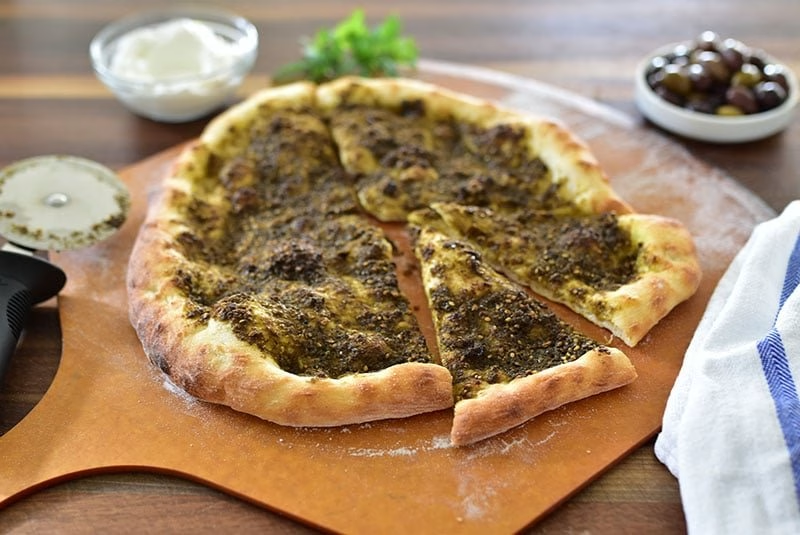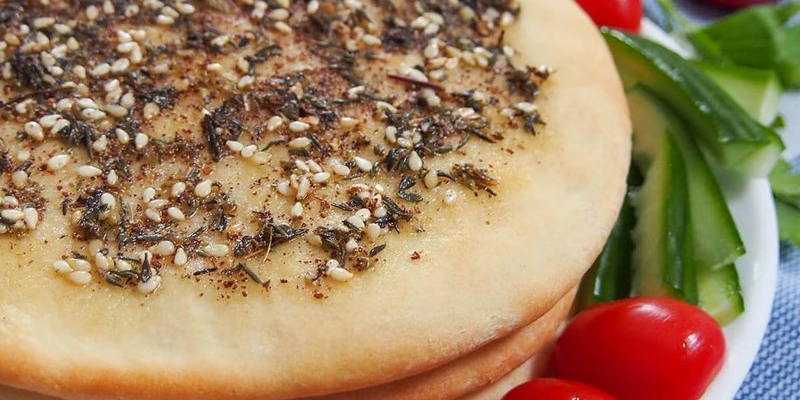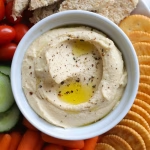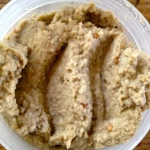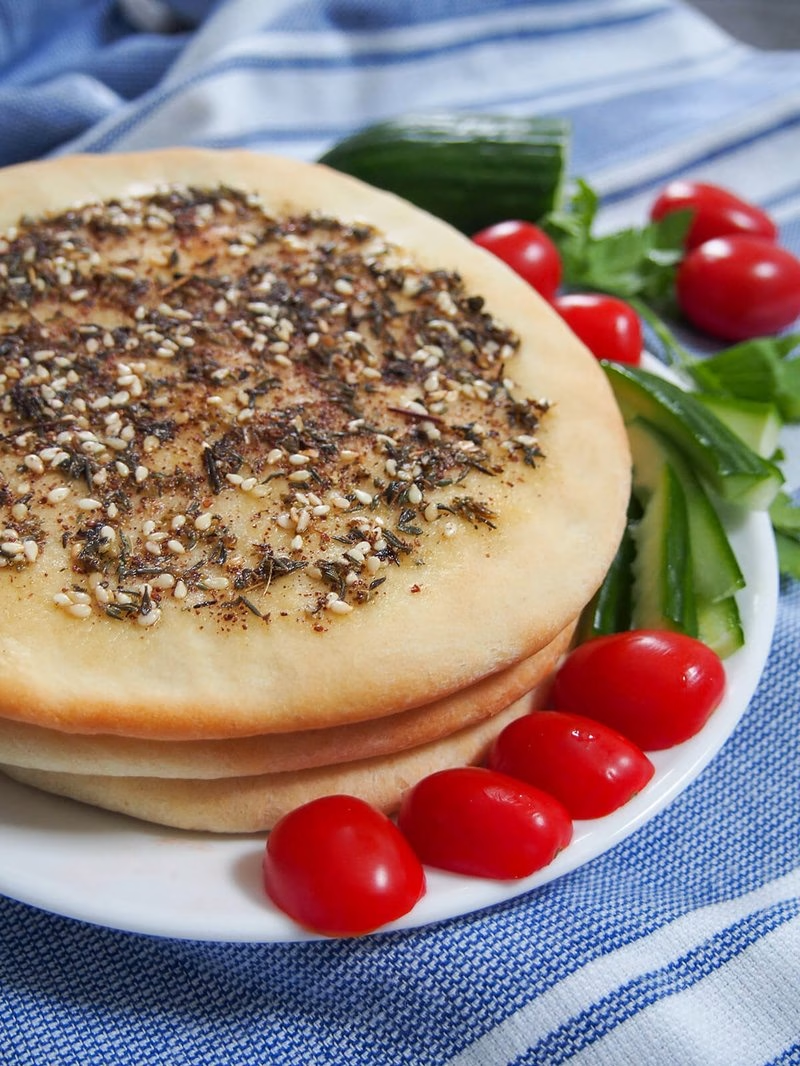
Introduction
Ah, Labanese Za’Atar Bread, a delightful Middle Eastern treat that captures the essence of old-world flavors in every bite. This flatbread, fragrant with aromatic herbs and spices, is a staple in Lebanese cuisine, loved for its versatility and rich taste. Originating from the Levant region, Za’atar (a unique blend of thyme, sesame seeds, and sumac) adds a zesty twist that elevates the humble bread into something extraordinary.
In this article, we’ll explore the fascinating world of Labanese Za’Atar Bread ingredients, share a best Labanese Za’Atar Bread recipe that you can easily whip up at home, and even discuss variations to suit your palate. By the end, you’ll be ready to impress friends and family with your newfound baking skills—who knew homemade bread could be this easy and rewarding? Let’s dive into the magic of making your own Za’atar Bread!
Ingredients
Here’s what you’ll need to create this aromatic bread:
| Ingredient | Measurement | Description |
|---|---|---|
| All-purpose flour | 3 cups | *The base of our Labanese Za’Atar Bread, providing the perfect chewy texture.* |
| Warm water | 1 cup | *Essential for activating the yeast and ensuring a soft dough.* |
| Active dry yeast | 1 packet (2 ¼ tsp) | *This makes your Za’atar Bread rise beautifully.* |
| Olive oil | 2 tbsp | *Adds richness and flavor, making the bread extra special.* |
| Salt | 1 tsp | *Brings out the flavors of the herbs and spices.* |
| Za’atar spice blend | ¼ cup | *The star of the show, bringing earthy, tangy notes to the bread.* |
| Sesame seeds | 2 tbsp | *For a crunchy topping that adds texture.* |
Each ingredient plays a crucial role in creating a delicious loaf, and together they make a wonderful homemade Labanese Za’Atar Bread that you’ll want to share with everyone. You can also serve it with a zesty Labanese Za’Atar Bread sauce for dipping!
Step-by-Step Instructions
Making Labanese Za’Atar Bread at home is a delightful adventure. Here’s how to do it:
Step 1: Prepare the Dough – In a large mixing bowl, combine the warm water and yeast. Let it sit for about 5 minutes until bubbly. This is crucial as it activates the yeast for a fluffy bread. Now, add olive oil, salt, and flour gradually, mixing until a dough forms. Don’t stress if it’s a bit sticky; that’s normal!
Step 2: Knead the Dough – Lightly flour your work surface and transfer the dough. Knead for about 10 minutes, until it’s smooth and elastic. This step is essential as it develops gluten, giving your bread that perfect structure. Once ready, place it in a greased bowl, cover it with a clean towel, and let it rise in a warm spot for about an hour, or until it doubles in size.
Step 3: Prepare Toppings – While waiting for the dough, mix your Za’atar spice blend and sesame seeds in a small bowl. This will be the delicious topping that gives the bread its signature flavor.
Step 4: Shape the Bread – After the dough has risen, punch it down gently to release the air. Divide it into equal pieces, about the size of a golf ball. Roll each piece into a flat round disk about ½ inch thick.
Step 5: Add the Za’atar Topping – Brush the top of each flatbread with a bit of olive oil, then sprinkle generously with Za’atar spice and sesame seeds. This will bring a burst of flavor to every bite!
Step 6: Bake the Bread – Preheat your oven to 475°F (245°C). Place your flatbreads on a baking sheet lined with parchment paper, and bake for about 8-10 minutes, or until they puff up and are golden brown. The aroma will be irresistible!
Step 7: Cool and Serve – Once they’re done, let the Labanese Za’Atar Bread cool on a wire rack. Serve warm with yogurt, hummus, or your favorite dip for an authentic experience. Enjoy!
Pro Tips
– For a softer texture, cover the baking sheet with a damp towel after baking. This helps retain moisture.
– Experiment with the Za’atar blend by adding crushed oregano or thyme to enhance flavor, customizing your bread to your preference.
– If you’re short on time, you can use store-bought dough; just roll it out and top it with the Za’atar mixture.
– Want to get creative? Try adding grated cheese or olives before baking for a different twist on traditional Za’atar Bread.
– Serving it fresh is key, but if you have leftovers, wrap them tightly and store them at room temperature for a day or two.
Nutritional Information
Here’s a quick look at the nutritional facts per serving (1 piece of Labanese Za’Atar Bread):
| Nutrient | Amount |
|---|---|
| Calories | 150 |
| Protein | 4g |
| Carbohydrates | 23g |
| Saturated Fats | 1g |
| Fiber | 1g |
| Cholesterol | 0mg |
| Sugars | 0g |
| Fat | 5g |
FAQs
What is the best way to store Labanese Za’Atar Bread?
Store your Labanese Za’Atar Bread at room temperature in an airtight container for up to two days. For longer storage, you can freeze it for up to a month.
Can Labanese Za’Atar Bread be made vegan or gluten-free?
Absolutely! Substitute regular flour with a gluten-free blend and skip any dairy in toppings for a tasty vegan version.
What are the best side dishes to serve with Labanese Za’Atar Bread?
Pair it with fresh tabbouleh, creamy hummus, or garlic labneh for a perfect meal.
How long does it take to prepare Labanese Za’Atar Bread?
Including rising time, plan for about 2 hours; actual hands-on time is around 30-40 minutes.
Can I freeze Labanese Za’Atar Bread for later?
Yes! Wrap them in plastic wrap and aluminum foil before placing them in the freezer. Thaw at room temperature when ready to enjoy.
What can I substitute for Za’atar spice?
In a pinch, mix together dried thyme, sesame seeds, and a squeeze of lemon—it’s not the same, but it can work!
Can Labanese Za’Atar Bread be made on a stovetop?
Yes, you can cook the flatbread in a skillet over medium heat. Just make sure to check for doneness and adjust cooking time.
What’s the history behind Za’atar?
Za’atar has ancient roots in Middle Eastern culture, traditionally made from wild thyme, and has various regional variations that celebrate local flavors.
